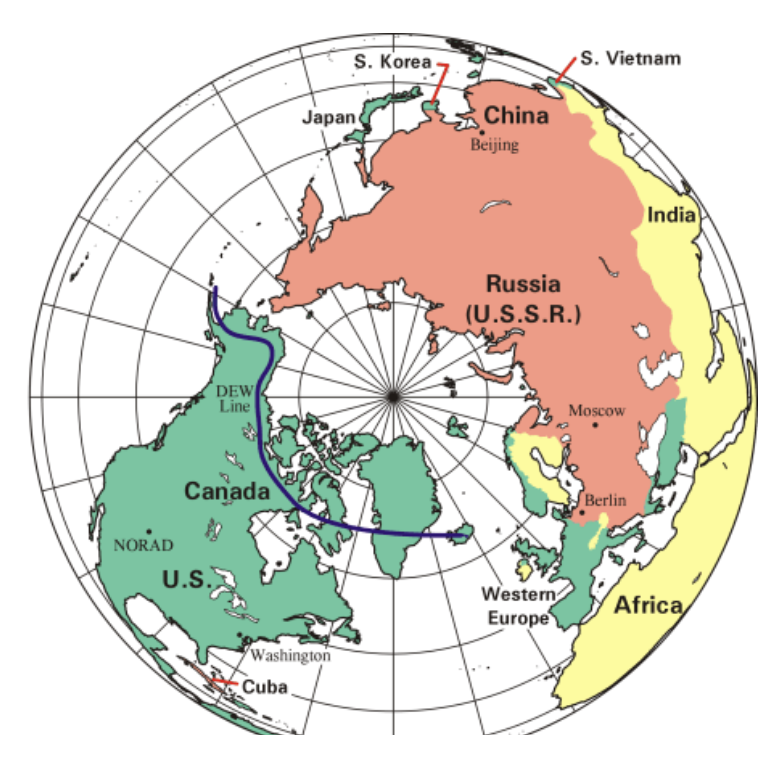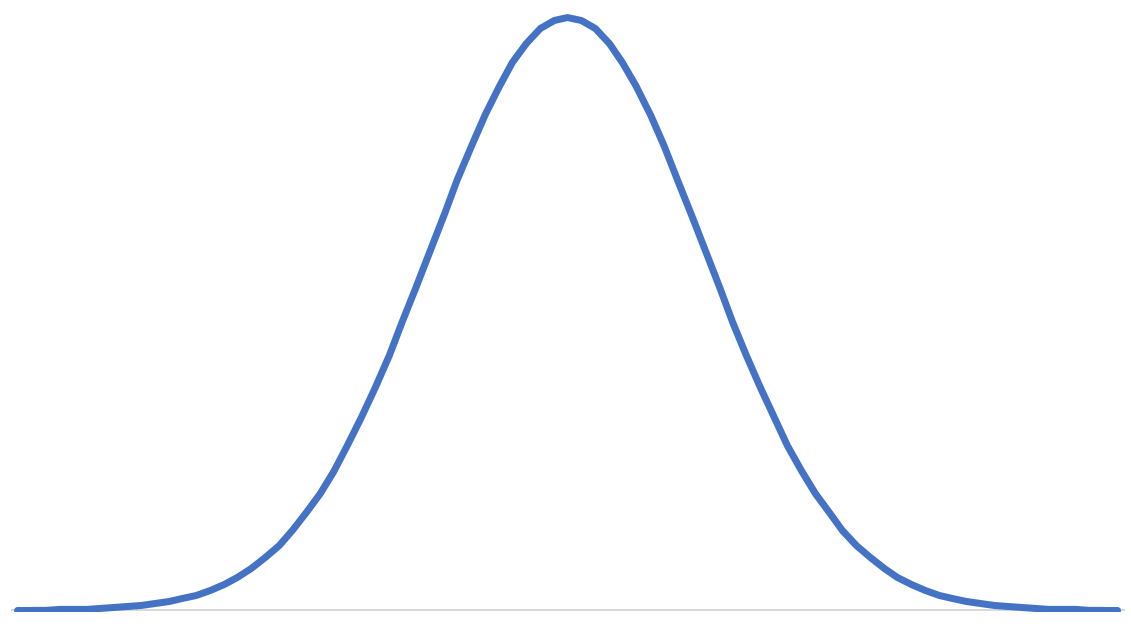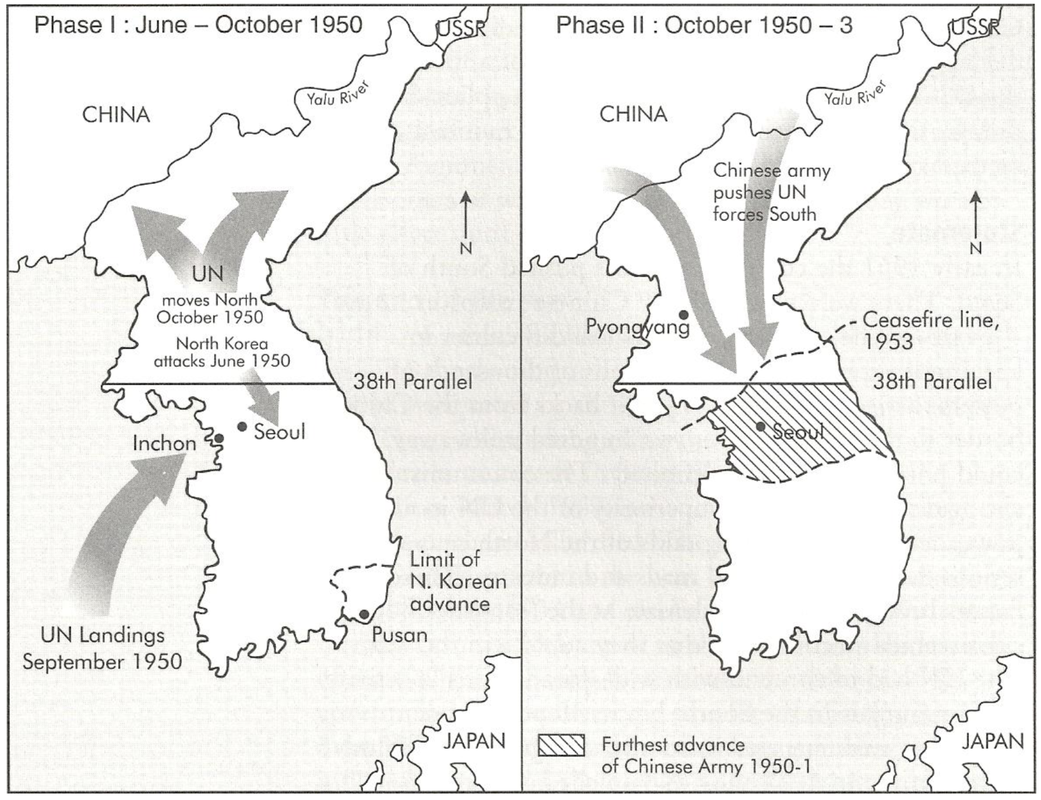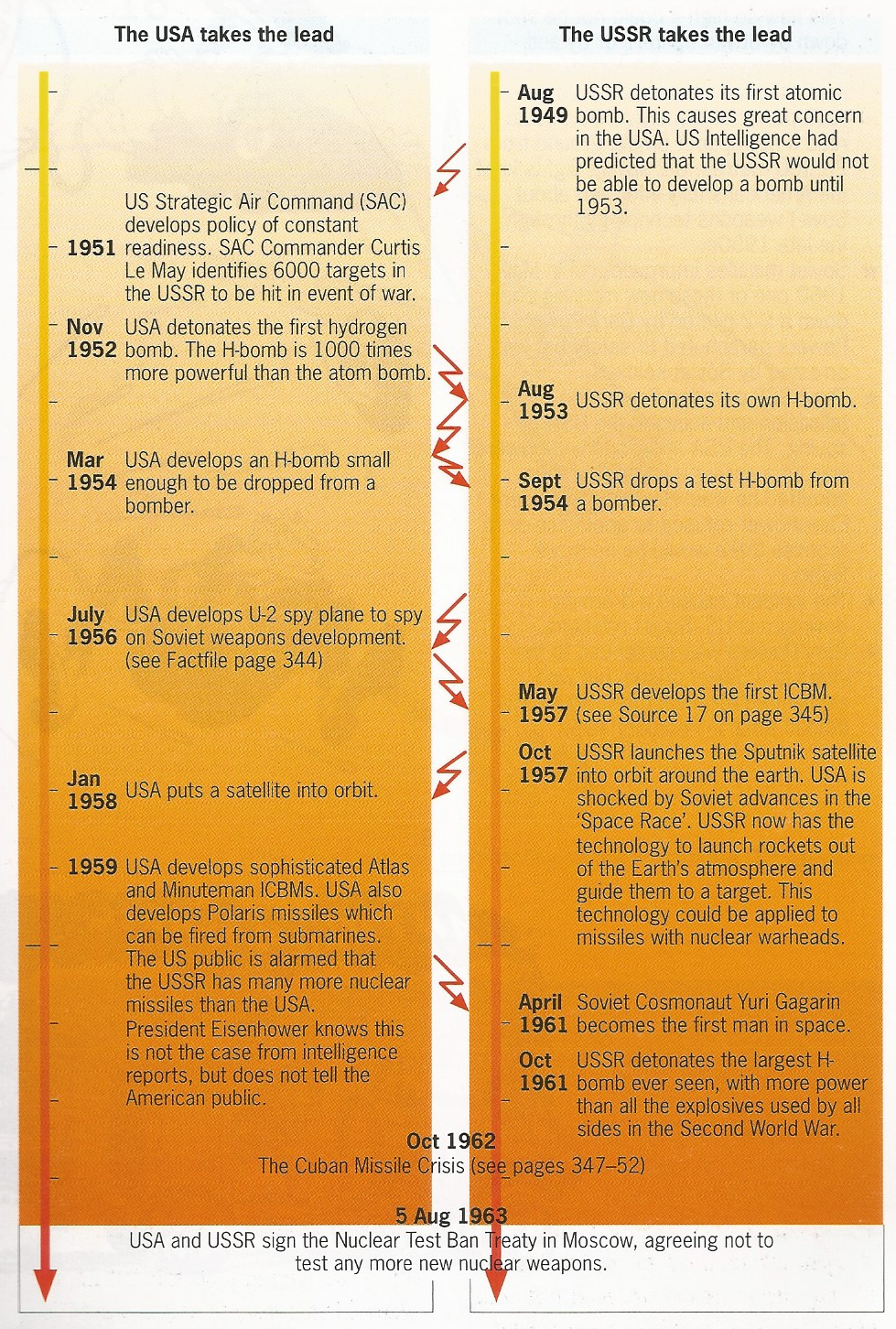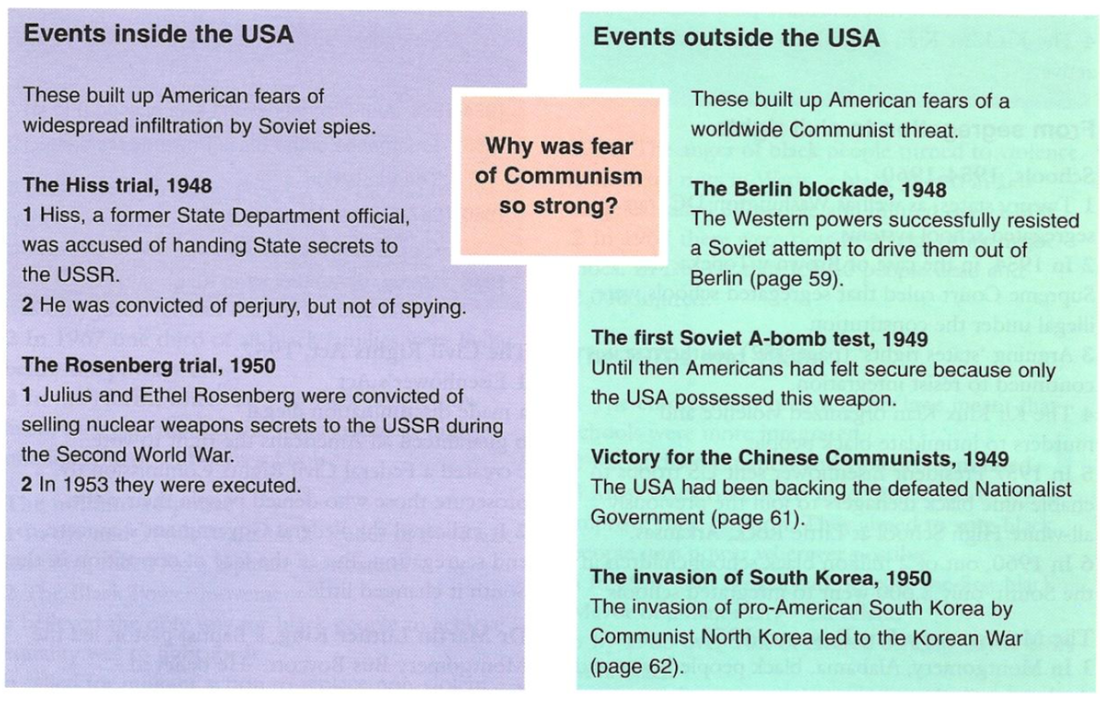Lesson 4 - How did the Cold War develop in the 1950s?
|
This lesson is designed to give you an overview of how the Cold War developed in the 1950s. We do not have time to go into detail, but it important that you are able to explain the main developments. I have identified four themes.
1. How the Globalisation of the Cold War resulted in the USA and USSR taking their ideological and geopolitical disputes to Asia (Korea 1950-53), South America (Guatemala 1954) and Africa (The Congo 1960). 2. We'll look at how the fluctuating relations of the 1950s can be plotting on a graph. The 1950s began and ended with relations between the superpowers as ice cold, but in the middle of the 1950s there was a significant thaw. 3. The third feature of the 1950s is the arms and space race. The fourth characteristic was American insecurity and the resulting Second Red Scare. |
|
|
Globalisation of the Cold War
Communist revolution China in 1949 is followed by conflict in Korea, Vietnam, Cuba and the Middle East. The Cold War becomes mixed up with the process of decolonisation. To some extent USA and Soviet policy makers could empathise with each other, but appreciating the mentalité of nations whose people, culture and history they did not understand would increase the challenge. |
Globalisation of the Cold War also reflected in the clandestine actions of the KGB and CIA around the world. In Guatemala in1954, the democratically elected left-wing (Swiss!) president Jacobo Arbenz was overthown in a CIA backed coup. The Congo (1960, see decolonisation) and in the development of the U2 spy plane brought the long decade to a conclusion.
|
Bell Curve relations
If the relations between the superpowers in the 1950s could be plotted on a graph, they may resemble the shape of a bell curve. With the Korean War (1950-53) Cold War relations are frigid, but things began to thaw with the death of Stalin (1953) and the 'spirit of Geneva' (1955) and Khrushchev’s ‘Peaceful coexistence’ rather than Zhdanov’s ‘Two Camps’ (1956). But events in Hungary in 1956 marked a turning point and the decade ended with Cuban revolution (1959) and the U2 spy plane incident (1960). The Korean War 1950-53 (Walsh 338-41) |
In 1950 President Truman asked the National Security Council to produce a report on US Cold War policy. The result was a document known as NSC-68. This report saw the world in bipolar terms, highlighting the division of the world into two superpowers in conflict with each other. This situation, according to the report, had been brought about because of the USSR's aim to extend their authority in order to achieve domination over both Europe and Asia. This view saw the Soviet Union under Stalin as aiming for nothing short of world conquest. NSC-68 made recommendations for the direction of US foreign policy: it should do all it could to ensure non-communist regimes were viable as alternatives to communism and it should take military measures to meet the threat of communism. This policy was to be tested when the North Koreans invaded the South in 1950.
To the US government, concerned about the spread of communism in China and Indo-China, this was further evidence of a communist conspiracy directed from Moscow. US intervention followed within two days of the initial attack by the North. Truman, under pressure from anti-communist hysteria at home (see next lesson), authorised the sending of air and naval power to South Korea. The UN called on North Korea to withdraw its forces from the South and voted to send assistance to defend South Korea. The USSR, which had the power to veto any decision in the Security Council of the UN, was absent at this crucial moment in protest over the failure to admit communist China into the organisation, although it is also clear that Stalin deliberately allowed this Soviet absence. After his failure in Berlin, Stalin felt that encouraging the USA to engage in Korea (and China) could only bring positive consequences to the USSR.
|
The course of war
The North's push into the South - Invading North Korean forces pushed southwards with great success, capturing Seoul, the capital of South Korea, and moving towards Pusan. By early September South Korean forces had been pushed back to Pusan but the North Korean army was now outnumbered by the arrival of US troops. Two hundred and sixty-one ships landed UN troops almost unopposed. This relieved the pressure on Pusan and within days the South Koreans were able to push North Korea's army back towards the 38th Parallel. In the face of superior US forces the army of North Korea started to disintegrate. On 30 September South Korean forces crossed the 38th Parallel and entered the North. As the UN forces moved closer to the Yalu River the Chinese became increasingly concerned about their own security. Mao may also have seen the war as an opportunity to replace Soviet influence over North Korea with that of China. |
The Chinese forces entered the war in October and quickly forced the UN back. In early 1951 the communist forces pushed South of Seoul. To break the stalemate, MacArthur renewed his call for atomic bombs to be used against China. Truman sacked the general in April 1951. In July 1951, both sides were ready to open peace talks. The war continued for two years without significant change. The death of Stalin in March 1953 marked a turning point in Korea and in Europe (see below). On 27 July 1953 an armistice was finally agreed. China, North Korea and the USA signed the ceasefire but a state of war still exists between the two Koreas.
DeStalinisation and the 'spirit of Geneva' 1955 (Walsh 342, 400-1)
|
|
The death of Stalin fundamentally changed the nature of the Cold War. On 15 May 1955, the USSR, together with the three Western powers occupying Austria (USA, Great Britain and France), signed a treaty which officially put an end to the state of war and established an alternative to the peaceful hostility that had characterised the end of the Berlin crisis in 1949. Austria was to be self-governing but strictly independent. The occupying forces left. Then a few months later at the Geneva Summit of July 1955 world leaders began discussions on arms negotiations, trade barriers, diplomacy and nuclear warfare. Finally, the new Soviet leader Nikita Khrushchev spoke of a new policy of 'peaceful coexistence', denounced Stalinism and even went to Yugoslavia to settle differences with Tito.
|
Poland and Hungary 1956 (Walsh 401-3)
In Central and Eastern Europe, with the death of Stalin and the start of de-Stalinisation, the populations of several satellite states attempted to free themselves from Soviet rule. In Poland, despite several violent clashes in Poznan, Gomułka became the new Polish leader and succeeded in introducing reforms that broke with Soviet orthodoxy.
In Central and Eastern Europe, with the death of Stalin and the start of de-Stalinisation, the populations of several satellite states attempted to free themselves from Soviet rule. In Poland, despite several violent clashes in Poznan, Gomułka became the new Polish leader and succeeded in introducing reforms that broke with Soviet orthodoxy.
|
|
In Hungary, where the reformers tried to go much further the situation was very different. Some members of the Hungarian army fought on the side of the rebels. A new Hungarian government, led by Imre Nagy, supported the rebels. It called for the withdrawal of Soviet troops and abolished the one-party system before announcing Hungary’s unilateral withdrawal from the Warsaw Pact and proclaiming the country’s neutrality. Between 4 and 8 November 1956, Khrushchev ordered the Red Army to put down the Hungarian Uprising by force. Many thousands of people were killed. The USSR was fortunate with the timing because the Western powers were deeply divided and weakened by the Suez Crisis, which was happening at the same moment. The West was in no position to react appropriately.
|
U2 spy-plane incident 1960
The U2 spy-plane was developed by the CIA and first used in 1956. It could fly at very high altitudes, beyond the range of Soviet fighters. It was equipped with very powerful cameras and radio receivers. It flew over the USSR from bases in Pakistan and Norway, although the USA denied this. On May 1st 1960 Gary Powers was shot down in the USSR, he was captured and evidence of the spying was collected.
The U2 spy-plane was developed by the CIA and first used in 1956. It could fly at very high altitudes, beyond the range of Soviet fighters. It was equipped with very powerful cameras and radio receivers. It flew over the USSR from bases in Pakistan and Norway, although the USA denied this. On May 1st 1960 Gary Powers was shot down in the USSR, he was captured and evidence of the spying was collected.
|
|
At first the US denied everything. They assumed that Powers and his plane had been destroyed. A few days later, Khrushchev publicly revealed Powers and the evidence and President Eisenhower was forced to admit that the USA had been spying. A meeting between the powers had been planned in Paris in May 1960 to discuss nuclear arms reduction and the future of Germany. The delegates arrived just days after Eisenhower admitted the spying. Khrushchev demanded an end to the American use of the U2 and a formal apology. He got the first demand but not the second. Khrushchev stormed out of the meeting. |
The arms and space race (Walsh 343-346)
The 1950s was characterised by a nuclear arms race, the concept of Mutually Assured Destruction (MAD) and a race to conquer space. Initially the superpowers on producing increasingly powerful weapons but later the focus shifted to delivery systems (missiles).
The USA stayed ahead with explosive power but fell behind with missile technology. The USSR launched the first man made satellite (Sputnik 1957) and put the first man in space (Yuri Gagarin 1961.)
The 1950s was characterised by a nuclear arms race, the concept of Mutually Assured Destruction (MAD) and a race to conquer space. Initially the superpowers on producing increasingly powerful weapons but later the focus shifted to delivery systems (missiles).
The USA stayed ahead with explosive power but fell behind with missile technology. The USSR launched the first man made satellite (Sputnik 1957) and put the first man in space (Yuri Gagarin 1961.)
Insecurity, McCarthyism and popular culture.
Setbacks for containment in China and Korea led to the development of Eisenhower’s Domino Theory. There was fear that Communism could spread like a virus or like toppling dominoes. The actions of Senator McCarthy and HUAC created a climate of red scare (again cf.1920s). Fear of nuclear war became an everyday concern, made all the worse by Soviet leadership of the space race. Popular culture, and in particular cinema and television reflected these themes.
McCarthyism
McCarthyism was a campaign against Communists led by Senator Joe McCarthy between 1950 and 1954. Without offering proof, McCarthy accused hundreds of people, ranging from scientists to entertainers, of secretly working for the USSR. For a time McCarthy’s ‘witch-hunt’ was supported by the press and public opinion. No politician could afford to criticise him. During the campaign, over two thousand people were summoned to appear before the Senate’s House Un-American Activities Committee (HUAC). About 400 were tried and sent to jail. The ‘witch-hunt’ came to include those with liberal or left-wing opinions which were branded ‘un-American’. In 1953 McCarthy became chairman of the Senate’s Permanent Committee of Investigation. Televised hearings exposed him as a bully and a liar. In 1954 McCarthy’s methods were condemned by the Senate. He was forced out of public life.
Setbacks for containment in China and Korea led to the development of Eisenhower’s Domino Theory. There was fear that Communism could spread like a virus or like toppling dominoes. The actions of Senator McCarthy and HUAC created a climate of red scare (again cf.1920s). Fear of nuclear war became an everyday concern, made all the worse by Soviet leadership of the space race. Popular culture, and in particular cinema and television reflected these themes.
McCarthyism
McCarthyism was a campaign against Communists led by Senator Joe McCarthy between 1950 and 1954. Without offering proof, McCarthy accused hundreds of people, ranging from scientists to entertainers, of secretly working for the USSR. For a time McCarthy’s ‘witch-hunt’ was supported by the press and public opinion. No politician could afford to criticise him. During the campaign, over two thousand people were summoned to appear before the Senate’s House Un-American Activities Committee (HUAC). About 400 were tried and sent to jail. The ‘witch-hunt’ came to include those with liberal or left-wing opinions which were branded ‘un-American’. In 1953 McCarthy became chairman of the Senate’s Permanent Committee of Investigation. Televised hearings exposed him as a bully and a liar. In 1954 McCarthy’s methods were condemned by the Senate. He was forced out of public life.
Activity
I have made a series of relatively short videos above, which taken together will take over an hour to watch. It is important that you watch them eventually, they will give you an excellent overview of the dramatic events of the 1950s. It is also important to make a few notes to help you remember the most important aspects of the Cold War in the 1950s.
When you have watched the films you will make a 'living graph' (a timeline with attitude!) either digitally (by downloading and editing) or by designing your own, to show how the relations between the USA and USSR developed over the 1950s.
I have made a series of relatively short videos above, which taken together will take over an hour to watch. It is important that you watch them eventually, they will give you an excellent overview of the dramatic events of the 1950s. It is also important to make a few notes to help you remember the most important aspects of the Cold War in the 1950s.
When you have watched the films you will make a 'living graph' (a timeline with attitude!) either digitally (by downloading and editing) or by designing your own, to show how the relations between the USA and USSR developed over the 1950s.
|
Extras
John Green has made at least three separate films about the Cold War. This one focuses on the American perspective. |
|

